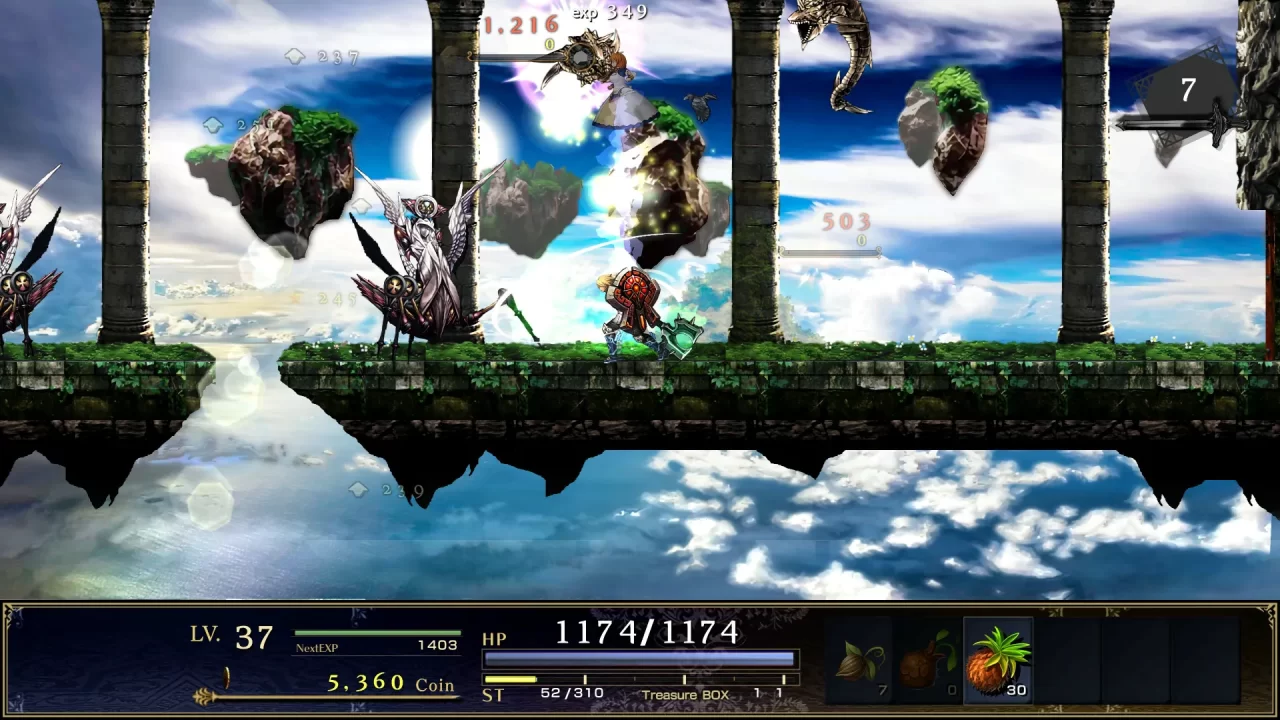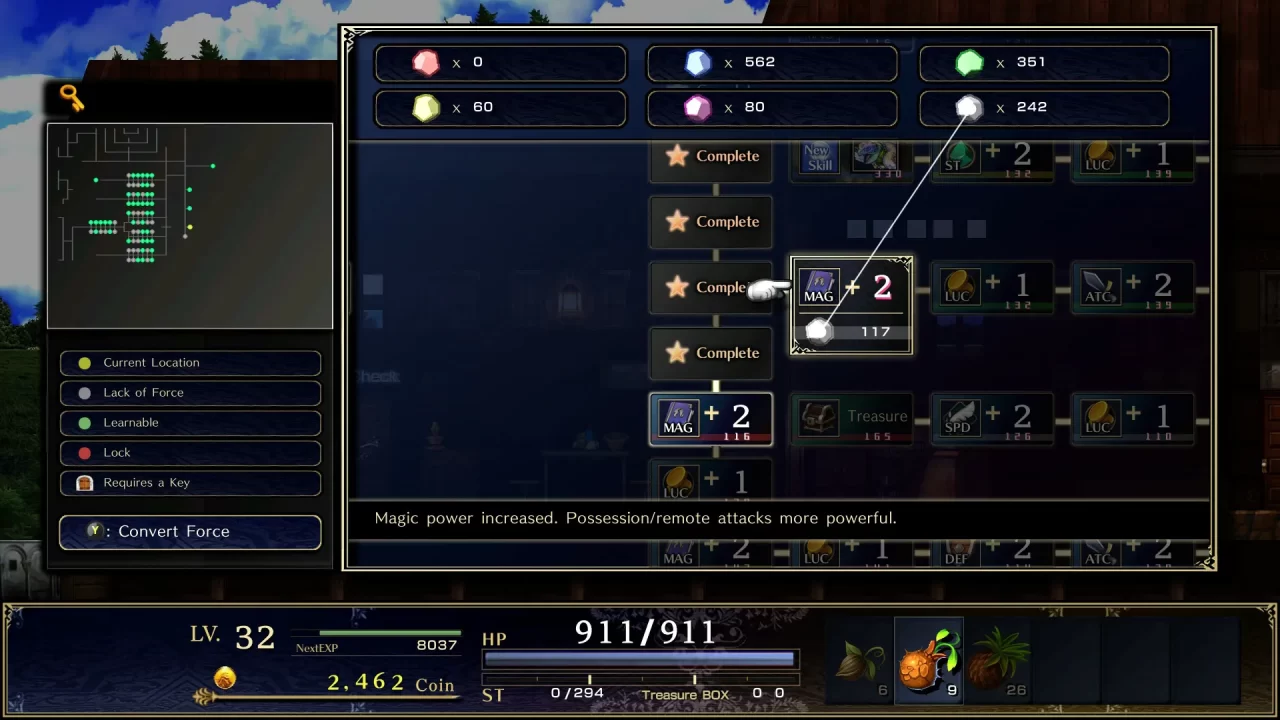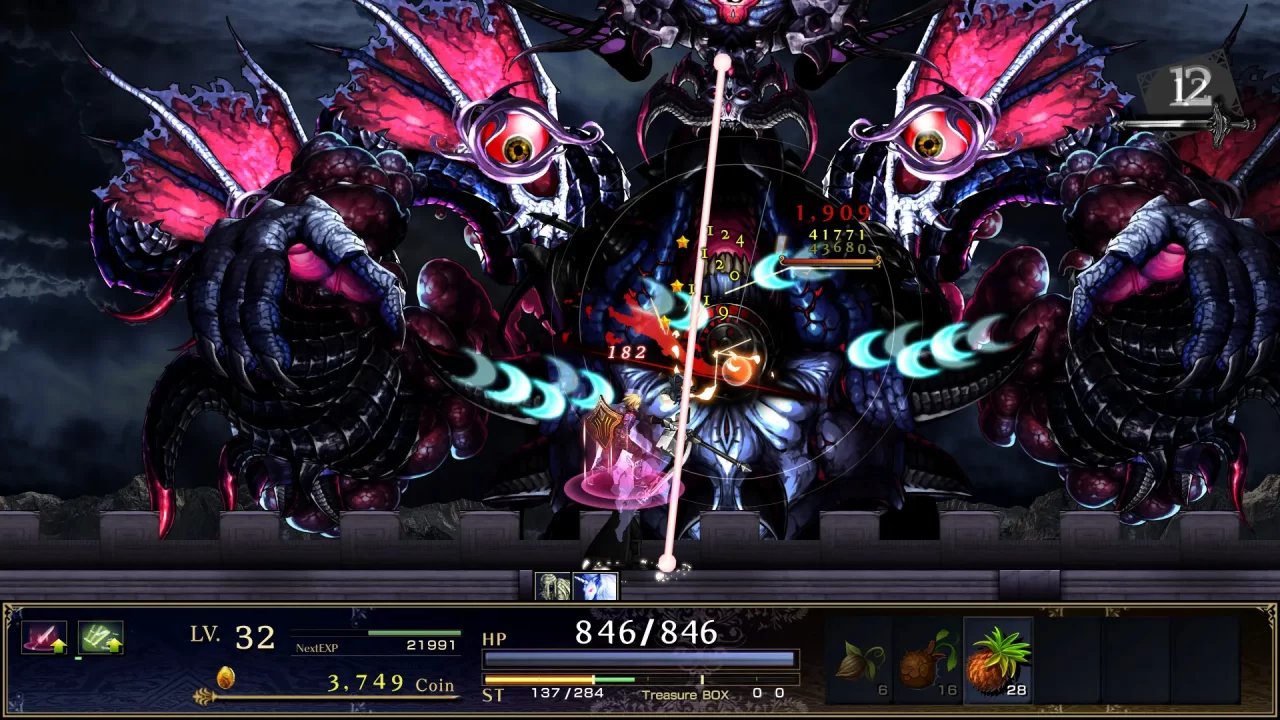When you think of Japanese game development, the first things that probably come to mind are the massive global game development houses like Square Enix, Capcom, Sega, or Bandai Namco. These companies have created some all-time classic games that have dominated and defined the industry for most of us. However, what remains more hidden to western audiences is Japan’s venerable history of doujin games, or fan-created and independently developed works typically distributed at conventions (such as Comiket) or online as free downloads. There are a few notable examples of freeware doujin games making their way west (such as Cave Story or Vestaria Saga), but the low-cost production of most of these games rules out much chance of a localization for English-speaking players, especially for text-heavy genres like RPGs. Luckily, publisher Whisper Games has localized side-scrolling action RPG ASTLIBRA Revision and brought it to Nintendo Switch. ASTLIBRA Revision represents the culmination of 15 years of work by developer KEIZO, who created the game almost entirely independently using game creation tool DX Library.
ASTLIBRA Revision takes inspiration from classic side-scrolling action RPGs like Ys III: Wanderers from Ys and Vanillaware’s Princess Crown and Odin Sphere, but adds layers of complexity and depth with its intricate character progression systems, unique combat mechanics, and mind-bending time-travel narrative. The game left me questioning the nature of fate and the strength of human bonds in the face of manipulative and malevolent gods, the impact of technology on humanity and nature, and the cost of going back and changing the moments we most regret. Despite ASTLIBRA Revision’s humble origins and presentation, the emotional core of the storytelling, the sense of scale presented in its most climactic moments and the satisfying progression systems kept me enraptured throughout and eager to start up a second playthrough.
ASTLIBRA Revision begins with a young boy and a young girl in a red dress and wearing a long, white ribbon playing in a field, only to be interrupted as demons descend upon their village. The boy wakes up in a cabin within an isolated forest, missing most of his memories and with no knowledge of how he got there. His only company is a talking crow, who also has no idea who they are or how they got there. The crow begins to read the books left in the cabin to learn of the outside world, taking the name of the author Karon and teaching the boy all that he learns of the world in their pages. Plagued by dreams of the girl, the boy dons the white ribbon as a headband and convinces the crow to set out into the wilderness with him in search of the girl and any sign of human civilization. They walk for eight years until they finally come across a red-haired adventurer named Gau, who offers to show them the way to Rispadar, the largest city left on the continent now that the rest have been destroyed by demons. On the way there, they come across a ruined village, and are transported back in time before it was destroyed. Inside a cave near the village they find the Scales of Astraea, a relic of the goddess of fate, and become its bearer. Once they return to their own time and make it to the city, they join Gau’s guild and begin taking on odd jobs, hoping to find out more about their past and the young girl from their dreams.
While this setup may seem tropey and mundane (evil force destroys the hero’s village, hero afflicted with amnesia, hero chosen to wield a mysterious power, etc.), ASTLIBRA Revision uses this familiar foundation as the basis for an intriguing and unique storyline which slowly peels back the layers to reveal more and more about the main character, his companions, and the nature of the world over time. The Scales of Astraea are unpredictable, and cannot be controlled by the bearer. They are only activated when the bearer is in the presence of another with the will to change the past. ASTLIBRA Revision is divided into chapters (the freeware version was released episodically), and each chapter is a vignette in which the bearer is sent on a job where the scales activate with unexpected results. As the main character is sent back in time to address these conflicts or assist others, they begin to remember more of their own past, and the power of the scales draws the attention of outside forces. At first I was simply interested in the mystery of the main character’s origins and the power of the scales, but the game does a fantastic job of endearing you to the main character’s companions like Gau, the dark witch Kuro, the guild mistress Meloo, and the various side characters who you help with the Scales. The outcomes from using the scales are unpredictable, and the choices you make in each chapter can have significant impacts later on. The narrative reminds me of Tetsuya Takahashi’s greatest works like Xenogears or Xenoblade Chronicles, where the story starts out rather small and personal but expands in scope, ambition and thematic depth as the game progresses.
ASTLIBRA Revision’s gameplay is superb, marrying a straightforward 2D action combat system with intricate progression systems that hone your character into a god-killing force of nature. Attacks are executed primarily with one button, with multiple attacks chaining into ground-based or aerial combos. The defining aspect of the combat is how you mitigate damage; most 2D action RPGs of this type include a dodge or dash with invincibility frames. In ASTLIBRA Revision, you can jump or dash to move out of the way of attacks, but doing so will not provide any invulnerability. Instead, you can block incoming attacks with a shield if you have one equipped and your stamina holds out, or you can use the possession system.
The possession system is ASTLIBRA Revision’s magic system, which includes everything from launching projectile attacks and casting buffs to summoning monsters to fight alongside you. Spells are cast by pressing the X button and inputting the directional combo associated with the spell. As the spell is cast, the player is given a brief window of invulnerability. Instead of using mana, spells pull from an ST meter which increases as you attack enemies, and decreases when out of combat. These aspects all combine to create a system where aggressive, in-your-face tactics are rewarded. You want to be attacking as often as possible to generate ST, and then plan out your use of spells to tank enemy damage while doing as much burst damage as possible when demons are vulnerable. The flipside is that enemies hit very hard, and status effects are incredibly dangerous to the player. Furthermore, healing items are not instantaneous; once the player selects the item, a bar slowly decreases and the item is consumed at the end, with any damage the player takes interrupting the bar and canceling out the item. Combat thus has a high skill ceiling, where mastery of the various systems can prevent all incoming damage, but even a slight mistake can mean disaster. Enemy behavior is aggressive, and in the later portions of the game enemies will swarm the player in large groups. The only major issue is that with so many enemies and effects on screen battles are chaotic, making it difficult to discern when to block or cast a spell to avoid attacks.
Equally important are ASTLIBRA Revision’s various progression mechanics. The main character receives experience for killing enemies, and leveling up rewards you with five stat points you can allocate to any category. These stats can also be re-allocated at shops or in the level up screen, so you are never confined to a single build and can change things up when necessary. There is also the “Grow” menu, which serves as a vast network of stat upgrades and other bonuses reminiscent of the sphere grid from Final Fantasy X. All defeated enemies drop elemental gems called Force, and you spend Force to unlock each node. Unlocking certain nodes allows you to progress to the next, and some nodes offer bonuses other than stat upgrades, like new magic spells or even equipment. Equipment like weapons, armor, and shields all have their own experience bars, and when mastered convey passive skills that can be acquired in the Karon menu. As you explore the world, you find Magic Crystals, and some are awarded by mastering equipment as well. Each passive skill learned from equipment requires a certain amount of Magic Crystals to activate, and much like the stat points, you can re-allocate these at any time. These passive skills include movement options like double jumping and dash moves, exploration skills like the ability to breathe underwater, and defensive skills like knockback reduction or status effect resistance. Acquiring these skills is addictive, and I was constantly hunting down new equipment and materials to unlock the next skill.
Crafting is another major aspect of the game, and you will need to harvest copious amounts of monster parts in order to unlock most equipment. Shops require both gold and the requisite materials to purchase equipment. Formulas for new equipment can be found in chests dropped by monsters as well. Some materials can only be synthesized from other items, and some experimentation is necessary to figure out which combinations produce useful items. I neglected the crafting system early on in my playthrough, and missed out on some equipment before realizing how necessary it was to craft chest keys and baked goods for the higher level recipes. It can be frustrating at times since there is a distinct lack of guidance for the crafting system. But I appreciate that the game lets the player figure things out on their own, and it’s possible to progress through each chapter using only what the shops have available.
This Revision version of the game adds some additional post-game content to an already lengthy game, as well as an arena inside of Rispadar where you can challenge demons for more rewards throughout the journey. The presentation was also upgraded slightly, with Vanillaware artist Shigatake providing some redrawn character sprites and portraits, as well as redoing some of the boss designs. These massive, detailed bosses are a visual highlight, but the rest of the game is made up of assets purchased from asset packs that vary wildly in quality. It’s a consequence of ASTLIBRA Revision’s humble origins as a solo-developer freeware project, and while some of the background elements are especially ugly, the hodge-podge of contrasting assets gives the game a rugged sense of charm. It also lends a dreamlike quality to the game’s world, which fits in well with the game’s themes and central mystery. The music is similarly incohesive, featuring a variety of licensed music library tracks that, while enjoyable enough on their own, don’t always fit the events on screen.
The writing and localization are a mixed bag as well. The story is generally well-told and easy to follow, but the dialogue occasionally suffers from a rough translation. The emotional moments and more introspective themes are conveyed well, but the dialogue and lighter moments don’t always come across as intended. In particular, ASTLIBRA Revision is fond of using sexual situations for humor, and a lot of these just fell flat. There isn’t anything egregiously offensive, but I found myself rolling my eyes at many of these scenes and felt they added very little to the game. On the other hand, the way character backstories are weaved into the broader narrative and themes is quite impressive, particularly for a single developer without a background in writing fiction. For a story about time travel, fate, and interference from malevolent gods it is quite tight and focused, without falling into many of the convoluted traps common in other time travel media.
Ultimately ASTLIBRA Revision is a resounding success. KEIZO should be incredibly proud of what they’ve achieved after 15 years of work, designing such intricate gameplay systems and plotting an engaging narrative that rivals the work done by large teams with big budgets behind them. If you can look past the somewhat amateurish presentation there is a glittering diamond in the rough here, one that transcends its humble freeware beginnings into one of the best gaming experiences I’ve had all year.





